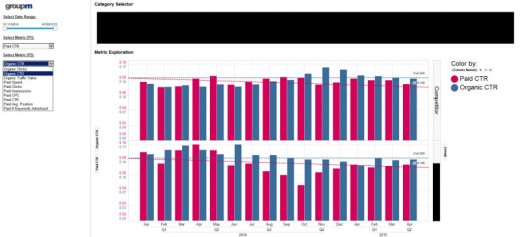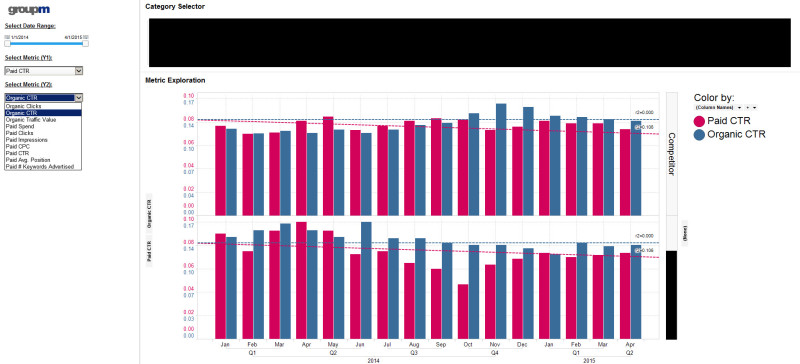Why Pay For GUIs as a substitute Of APIs?
GUI, API — don’t get bogged down through the acronyms. Columnist Andrew Ruegger explains why APIs are key for companies to efficiently leverage large knowledge.

if you happen to currently use information to help develop your corporation, you will inevitably end up in a conversation as a supervisor or director that starts with, “What’s the variation between an API and a UI agreement, and why are the pricing fashions so different?”
GUI, or UI, stands for Graphical person Interface, a device platform that gifts the back-end information in a visually coherent solution to users. it’s managed (by the use of online login) with the aid of the company you’re purchasing the provider. the whole lot from facebook to Gmail has a UI; it’s merely how customers engage on the web page with the servers.
API stands for application software Interface, which has a collection of routines and protocols that let your machines talk in an instant to other machines. briefly, APIs are how builders construct applications on other structures and a common means of uncooked knowledge change between two parties.
there are a variety of reasons why a company would use only u.s.a.versus APIs, or a mixture of each. APIs:
- Require larger technological skills to leverage;
- supply different knowledge;
- can be unreliable;
- regularly require a library of scripts, correct again-end storage with logical architecture, and continuous management;
- Have tougher pay structures to price range round;
- Require homegrown or additional bought purposes to provide similar insights.
the prices associated with u.s.a.reflect their high quality of information, their area of expertise available in the market, and their general consumer expertise. as an instance, corporations that offer Twitter analytics from the Twitter firehose are very pricey because the firehose isn’t awarded to firms and resource-intensive to process. Whereas if the company is simply tracking keyword rankings in Google for you, it tends to be low cost, as the market is oversaturated with similar choices.
APIs, however, are normally no longer subscription-based totally like UIs, but call-primarily based, and you get particularly what you ask for. In other words, you pay only for the uncooked material as opposed to the finished product.
The Case For An API
there are lots of structural explanation why americamake feel, one being that now and again the infrastructure doesn’t exist to toughen handiest APIs. alternatively, times are altering, and you don’t desire a team of developers anymore to leverage APIs and create nice solutions, particularly in the event you’re a smaller company and can’t have the funds for nine UI subscriptions.
when you’re a knowledgeable Excel user (or have something like Spotfire), that you can create and arrange a MySQL database (free), and if you happen to remember the basics of calling an API, usamay be something you want to start strategically moving faraway from. There are a lot of advantages to this if finished as it should be, including decrease costs, higher knowledge, and considerably less worker hours needed to tug the identical units of knowledge. Going this route requires a concrete plan which includes:
- a transparent vision of what you are trying to perform;
- an outstanding working out of the call limits in terms of worth and throttling;
- An shrewd storage and architecture;
- methods that support mass retrieval and manipulation/visualization (some Hadoop solutions like Arcadia are superior).
Having all your knowledge in a single situation — a good thing about APIs and centralized knowledge storage — permits for lots more flexibility in relation to automation, diagnosis and innovation.
as an example, I recently made this dashboard on Tableau Public the usage of AdGooroo knowledge for the Paid Search business in 2015. I had employees pull the data manually from AdGooroo’s UI, which took a long time, perhaps two to three hours, as we had been unaware that that they had an API.
Me being me, i wished more data; i wanted a date range of two years, blended by using area with their organic search knowledge. Manually, this is able to have taken 20 to 30 hours, however now we pull and produce visible dashboards in under in one minute (no longer including the decision time of about 10 minutes) for all of our brands and competitors.
no longer being a developer, i use KNIME to name their API in a workflow like this:

This workflow calls their API the use of the C# programming language, remembers if the data is neglected, consolidates, cleans, aggregates and writes my preferred sheet to a MySQL database on my laborious power. (My firm is hesitant to allow me write access to our database.)
After it writes, it bridges over to Spotfire and produces a dynamic dashboard that may be up to date speedy each and every month. that is then emailed out to all of our execution groups in a secure environment to leverage for execution:

Or with selectable metrics for more specific comparisons:

an identical efforts are carried out, becoming a member of a lot of our data sources, to supply quite a lot of totally different visuals from a variety of API feeds. this way, staff don’t need to log into 15 locations to get all their information and stay knowledgeable.
u.s.are surely the fitting resolution relying in your present know-how stack and trade objectives, but APIs are the future to superior business, growing numerous efficiencies and the flexibility to craft intricate statistical models that tie your digital investments to gross sales.
Some opinions expressed on this article is also those of a guest creator and not essentially advertising Land. body of workers authors are listed here.
(Some photography used below license from Shutterstock.com.)
advertising and marketing Land – web advertising news, methods & tips
(114)















